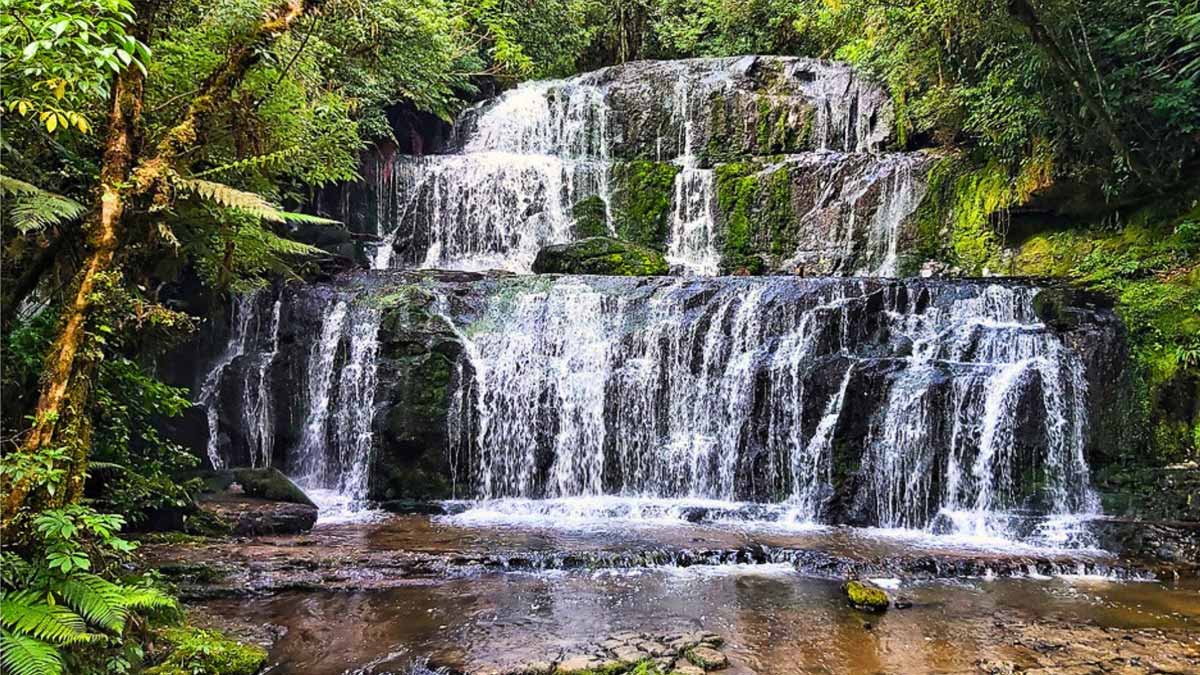First-ever footage shows a rare climb that reshapes how we think about movement, survival, and design. Scientists filmed a coordinated ascent that turns a rumor into usable evidence, and the stakes feel immediate for rivers and people. The behavior looks deliberate, yet motives still spark careful questions. At this moment, fish meet water, rock, and speed, and they keep going. That single sequence now supports better fieldwork, smarter planning, and cleaner conversations about what helps life persist.
What was seen and why it matters now
In November 2024, Brazilian military police noticed a school moving where water meets stone. It was behind falls one to four meters high. A week later, scientists returned to the same site and filmed the climb. It was the first time this species had been documented in such a large group. Witnesses described a tight formation that pulsed with purpose.
The footage shows bumblebee catfish pressing against slick rock, then inching upward between bursts of spray. Researchers recorded males and females, mostly mature adults, crossing short shelves and seams that broke the current. Three other aquatic species appeared nearby, which adds context on timing, habitat overlap, and seasonal flow.
Because the sighting was unexpected, teams emphasized simple field presence. They relied on eyes, cameras, and notes rather than complex rigs. That approach looks basic; yet it creates evidence fast, so decisions gain a firmer base. The climb confirms movement; the stills show fish at work; the timeline frames the event.
How fish can scale slick rock faces
Climbing in fast water starts with contact. Bodies hug the surface where flow thins, then slip into small eddies that lower drag. Short bursts push past steps, while rests happen on textured ledges and seams. Compared with salmon leaps, this strategy trades height for grip, timing, and relentless positioning.
Catfish have low profiles and strong pectoral fins, which aid grip. Their movement looks like a slow zipper: set, push, settle; set, push, settle. Because friction changes with algae and spray, a line advances where traction is best, not where the wall looks smooth. That path may zig and pause, yet it saves energy and risk.
For observers, the key is patient framing. Angles reveal paths that the eye first misses, so cameras must stay still while the river shifts. One clean shot, and the trail is obvious; and with that clarity, fish behavior moves from rumor to record. Notes tie frames to flow, which preserves meaning when memories blur.
Field observations that anchor ecology and guide choices
Scientists suspect the upstream push links to reproduction. They saw mature males and females together, which fits a seasonal run. Because three other species were present, timing may reflect shared cues like temperature and flow. Such patterns reveal corridors that maps omit, so ground truth reshapes planning and keeps options open.
The team stressed, “These findings highlight the importance of field observations.” Direct presence maps routes, bottlenecks, and resting points that models miss. With dams and diversions on many rivers, small migrators need safe passages. Without them, populations split and lose resilience, and the chain of life weakens.
Public sharing also matters. Simple video reaches people who never read a study, and the message sticks. Live cameras, like the Hilton Head Island Land Trust’s eagle cam, show the power of access. People watch, and they care. That attention supports design changes, and pressure grows; through that attention, fish and other species get broader support.
Why protecting routes for fish migration now matters
Numbers and timing ground the case. November 2024 marked the first sighting; a week later, the team returned. Falls were measured between one and four meters high. Those details, according to Phys.org’s reporting, set the scale and define effort. They also reveal the interval teams need to mobilize quickly after a tip.
Habitat fragmentation and river damming pose clear threats. Blocks raise energy costs, cut access to spawning grounds, and isolate pockets. Where passage is designed well, movement continues, and recruitment improves. Where it is ignored, the system sheds links. Once links vanish, recovery drags, so managers act before gaps widen.
Field data supports policy. Dates justify urgency, while measured heights guide engineering targets. Because these records travel fast, agencies can test fixes sooner. And with that speed, fish movement has a chance to persist across changing flows, while communities see why investment pays. Clear targets also align budgets and timelines.
From behavior study’s young roots to today’s wider lens
Formal study of animal behavior is recent. Core work dates to the 1930s. Tools improved; yet the most durable gains still start outside, in weather and mud. Camera phones, body cams, and drones add range. Trained notes keep meaning clear and bias in check, so evidence holds up later.
Humans depend on animals in direct and subtle ways. Food and labor are obvious; early warnings are not. Endangered status often signals deeper stress on water, land, or prey. Track the pulse, and you learn where a system bends before it breaks. That knowledge helps people plan.
This video entertains, and it teaches. People saw the climb, and they talk about channels, ledges, and flow. Communities ask for design that keeps movement open. The change helps fish and people thrive, and rivers keep living links. That civic push gives projects staying power.
Why this waterfall ascent matters for rivers and people
The climb turns a rare moment into guidance layered with dates, heights, and witnesses. Because the footage spread, more teams will wait in the spray rather than on models alone. Keep routes open. Test fixes fast. Share proof widely. With that rhythm, fish endure. Rivers stay connected, and communities gain resilient water futures. Trust the field, then refine in labs. Together, the cycle strengthens both evidence and care. People win when rivers work.
